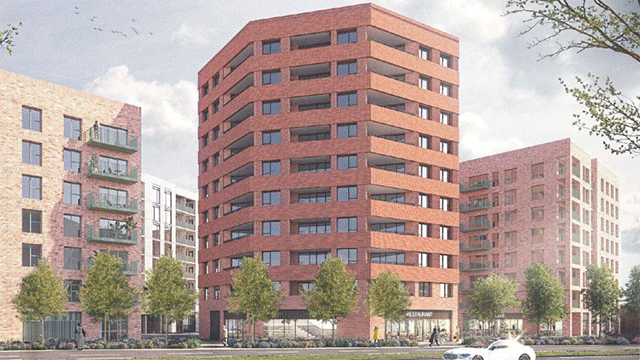COMMENT: Five years on from Andy Burnham’s election as metro mayor, and nearly eight years since signing its first devolution agreement, Greater Manchester is demonstrating the social and economic benefits that can result from devolving powers from Westminster.
A visible manifestation of the region’s success is the transformation of its built environment. Deloitte’s 2022 Crane Survey showed 10,717 homes under construction in Manchester and Salford at the end of 2021. The same survey reveals 25 starts across offices, residential, hotels, retail, leisure and education – outstripping most UK cities outside London.
However, levelling up is more than securing improvements to the fabric of towns and cities. At its core, it is about tackling regional disparities in skills and life chances. Greater Manchester’s latest devolution proposals aim to build on the progress of the transfer of the Adult Education Budget and Work & Health Programme to the city region.
So, how will measures in the Levelling Up and Regeneration Bill contribute to Greater Manchester’s continued devolution?
Manchester’s destiny
The overall mission statement offers some encouragement. The Bill’s aim is to ‘enshrine in law the government’s commitment to long-term missions to spread opportunity, drive productivity and boost local pride in every corner of the country’.
However, when it comes to extending the reach of devolution, rather than offering powers to Greater Manchester and other existing Mayoral Combined Authorities, the focus is on empowering non-urban areas. This will be achieved through the establishment of a new form of local government institution, the combined county authority – devolving to areas with two-tier local government.
Other elements of the Bill offer mixed messages about advancing Greater Manchester’s control over its own destiny. While Places for Everyone, the Greater Manchester spatial framework, is intended to provide a masterplan for development in the region – with the exception of Stockport – through to 2037, it will be the job of local plans promoted by the constituent authorities to deliver its aspirations.
Currently these local plan policies are of primary importance as the statutory test provides that applications for planning permission should be determined in accordance with the development plan, including local plans, unless material considerations indicate otherwise.
However, the Bill proposes to replace this test with a requirement that planning determinations are to be made in accordance with the development plan together with national development management policies, unless material considerations strongly indicate otherwise. This means that national development management policies are to be given the same statutory weight as local plan policies.
In the event of conflict between a local plan policy and a national development management policy, the latter will have primacy. This downgrading of the importance of local plan policies is at direct odds with the levelling up ethos.
Embedding design
Given its urban geography, Greater Manchester is focused on unlocking the potential of brownfield development, with plans for 21 projects and 2,700 homes under the Brownfield Housing Fund. The delivery of brownfield development and supporting infrastructure often relies on the use of compulsory purchase powers, and the Bill has the potential to make the CPO process quicker – and possibly cheaper – for acquiring authorities.
Reforms include the introduction of conditional confirmations of CPOs; the ability for compulsory purchase powers under CPOs to be exercised within a longer period than the current three-year window; giving inspectors the ability to choose the appropriate procedure to confirm a CPO; and provisions to digitalise the CPO process. The Bill also proposes amendments to the planning CPO power to clear up any doubt that it can be used for regeneration purposes.
The proposals in the Bill to further embed good design in the planning system can also assist urban renaissance in Greater Manchester. The Bill envisages that local planning authorities will have a design code in place covering their entire area. These are intended to act as a framework for the preparation of more detailed design codes covering specific areas or sites and led by the local planning authority, neighbourhood planning groups or developers. Importantly, these codes at every level should be informed by public consultation.
The Bill has been criticised for a lack of detail when it comes to many of its key provisions, and that secondary legislation will be needed to fill in any gaps. The scope it offers the Secretary of State to intervene in planning and devolution matters is also a concern.
It is to be hoped that what finally emerges from the legislative process is a set of tools that will enable the likes of Greater Manchester to get on with the essential work of unlocking the potential of their areas in the cause of levelling up.
Bob Pritchard is a legal director and part of Shoosmiths’ planning practice











